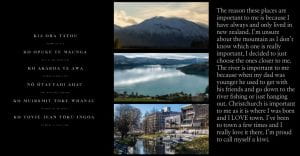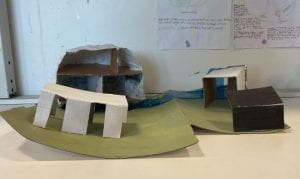Hi there, I’m Tovie-Jean and this is my Science test blog post!
- Describe the key topics we have covered so far this term:
The key issues we have covered in this term include Genetic code, DNA, Punnett squares, Alleles/Genes, Mutations, Natural selection, Artificial selection, Adaptation and finally, Evolution.
2. In one paragraph describe the words: DNA, Gene, Allele, Inherit, and Punnett square and connect them to each other.
3. Do the same as #2 but with the words: Trait, Natural selection, Survival, Reproduction and evolution.
TITAN:
Explain CRISPR and how CRISPR offers several key benefits for humans. Then explain if the benefits are morally acceptable to use.
Firstly, DNA and Genetic code.
The genetic code consists of sequences of nucleotides in DNA that dictate how information is translated into proteins. It is made up of four nitrogenous bases: adenine (A), thymine (T), cytosine (C), and guanine (G). The code is read in triplets called codons, each corresponding to a specific amino acid. This nearly universal code reflects a common evolutionary origin and plays a vital role in heredity. Mutations can lead to variations that influence traits and drive evolution. Understanding the genetic code is crucial in genetics, medicine, and biotechnology, as DNA serves as the genetic blueprint for all living organisms. Each nucleotide includes a phosphate, a sugar, and a nitrogenous base, with specific pairing rules facilitating DNA replication and protein production.
Now for a little about Punnett squares.
Punnett squares are a tool used in genetics to predict the possible genotypes and phenotypes of offspring based on parental traits. Named after Reginald Punnett, they consist of a grid where one parent’s alleles are listed along the top and the other’s along the side.
By filling in the squares, you can see the potential combinations of alleles. For instance, crossing a heterozygous parent (Aa) with a homozygous recessive parent (aa) results in a 50% chance of offspring being Aa and a 50% chance of aa.
Punnett squares help visualize inheritance patterns and illustrate concepts such as dominant and recessive traits, making them essential in the study of genetics.
Alleles/Genes and mutations:
Alleles and genes are key concepts in genetics. A gene is a piece of DNA that provides instructions for a specific protein, while alleles are different versions of a gene. For example, a gene for flower colour might have purple and white alleles. The combination of alleles from both parents determines an organism’s genotype and phenotype. Mutations are changes in the DNA sequence of a gene, which can occur due to factors like environmental influences or errors during DNA replication. They can be beneficial, harmful, or neutral. Beneficial mutations can enhance survival, while harmful ones may lead to disorders. Understanding alleles, genes, and mutations helps us grasp inheritance and evolution.
Natural/artificial selection, Adaption and evolution.
Natural selection is the process where organisms better adapted to their environment tend to survive and reproduce, a key idea in Charles Darwin’s theory of evolution. A well-known example is Darwin’s finches, which have evolved different beak shapes suited to their food sources in the Galápagos Islands, finches with larger beaks can crack tough seeds, while smaller beaks are better for eating insects. This adaptation shows how species change over time based on environmental pressures.
In contrast, artificial selection is when humans breed plants and animals for specific traits, such as distinct dog appearances. Unlike natural selection, this process is driven by human choices rather than environmental factors. Both natural and artificial selection demonstrate how adaptations play a crucial role in the evolution of species.
`Paragraph #1
DNA is packed with information about how everything works. These instruction manuals have different sections called genes, which tell our bodies how to make specific proteins. The cool part is that each gene can have different versions called alleles, so there can be variations in traits, like eye colour or flower colour. When babies inherit genes from their parents, they get a mix of those alleles, which shape who they are. Punnett squares help us figure out what kind of traits offspring might have by showing all the possible allele combinations from their parents, making it easier to understand how traits and features are passed down through generations.
`Paragraph #2
DNA is like the instruction manual for living things, holding the recipes for making proteins. Within this manual, genes are specific sections that determine traits, and alleles are different versions of those genes that create variations, like blue or brown eyes. When parents pass their DNA to their offspring, they mix and match these alleles, shaping the next generation. Punnett squares are a fun way to visualize this process, showing the possible combinations of alleles that kids might inherit from their parents.
CRISPR, or Clustered Regularly Interspaced Short Palindromic Repeats, is a gene-editing technology that enables precise modifications to an organism’s DNA. It uses a guide RNA to target specific DNA sequences and an enzyme called Cas9 to cut the DNA, allowing for the addition, deletion, or alteration of genetic code. The technology holds great promise for treating genetic disorders and improving agriculture.
CRISPR offers several key benefits for humans:
1. Genetic Disorder Treatment: It can potentially correct mutations causing diseases like cystic fibrosis and sickle cell anemia.
2. Cancer Therapy: CRISPR may help edit genes in cancer cells, enhancing their vulnerability to treatment.
3. Disease Prevention: It could modify genes to prevent hereditary diseases, improving long-term health.
4. Agricultural Improvements: By developing resilient crops, CRISPR can help ensure food security.
5. Biotechnology Advances: It paves the way to better vaccines and therapies.
The moral acceptability of CRISPR’s benefits is complicated. On one hand, it can correct genetic disorders and enhance agriculture, which is seen as positive. However, concerns arise when it comes to enhancements, like “designer babies,” which pose risks of inequality and consent issues. In agriculture, modified organisms could disrupt ecosystems, raising questions about potential harm. Therefore, the moral acceptability of CRISPR depends on intent, risks, consent, and social impact. Ongoing discussions among ethicists, scientists, and the public are essential to get through these challenges and ensure responsible use of the technology.
Anyways, That’s all for today,
Thank you for reading my blog/test!




